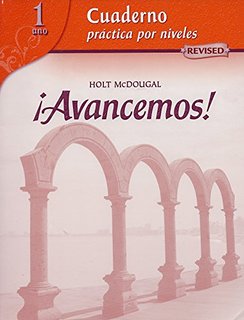
All Solutions
Page 301: Gramatica A
**Tip:** Look what word class do the words belong to. Most of the time, they are either an interrogative pronoun or conjunction, but also other types of words.
***Who** serves the food? — **No one** is here.*
In this sentence, the interrogative pronoun *”quién” (who)* is used. To give a negative answer to *”quién,”* we use *”nadie” (no one)*.
***¿quién? — nadie***
*Is there soup **or** fish? — There is **neither** one **nor** the other.*
If someone asks a question, “Is there x *or* y?”(¿Hay x o y?) you will give a negative answer using “*neither* x *nor* y” (*ni* el x *ni* el y).
***¿x o y? — ni el x ni el y***
*Do you have **something** with broccoli? — No, there is **nothing** (with broccoli).*
If someone asks a question with *”something” (algo)*, you will give a negative answer using *”nothing” (nada)*.
***¿algo? — nada***
*Do you **always** have meat? — No, I **never** do.*
This sentence illustrates opposite adverbs. You can give a negative answer by using a word that has an opposite meaning (an antonym.)
***¿siempre? — nunca***
***There is no** meat, **is there** chicken? — **Neither./Neither of those./That neither.***
When someone asks for x, but there is none, then they will ask if there is y. You can give a negative answer that will cover both x and y by using the word *”tampoco”* (it can be translated in more ways, as shown in the upper line.)
***no x, ¿y? — tampoco***
1. E
2. A
3. C
4. B
5. D
**N.B.** Unlike in English, double negation is allowed in Spanish.
*(She does not want anything to eat.)*
*(She does not want to talk to anyone.)*
*(Valeria neither wants to go out nor listen to music.)*
*(Valeria does not want to go to the movies and, neither to the theatre.)*
*(She does not want to buy any jeans.)*
1. nada
2. nadie
3. ni
4. tampoco
5. ningunos
*Ramiro does not want to watch **any/not one** movie in the cinema.*
Since we have a noun *la película*, we had to add *-a* at the end of *”ningun.”*
Because double negatives are not allowed in English, we had to translate it as *”any.”*
*His friends are not hungry. They do not want to eat **anything.***
Again, double negatives are not allowed in English, so we had to adjust our translation and use *”anything.”*
*Theatre tickets cost a lot. **No one** can buy/afford them.*
When we talk about people, we use *”nadie.”*
1. ninguna
2. nada
3. Nadie

